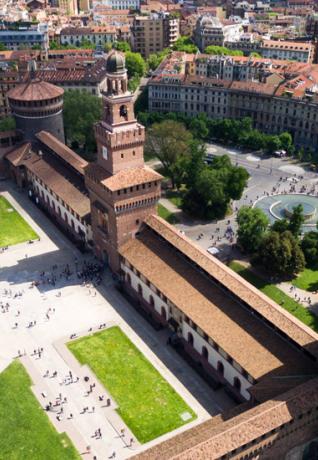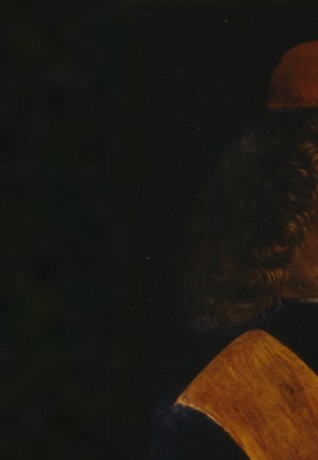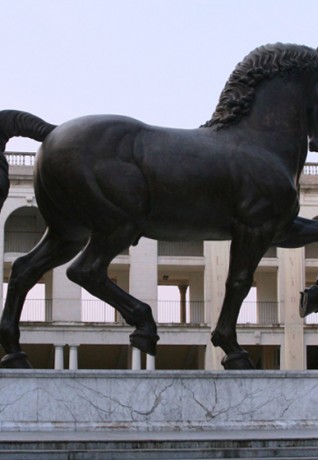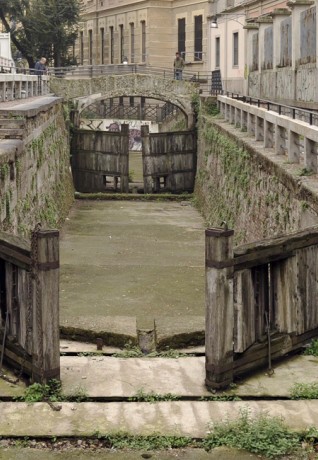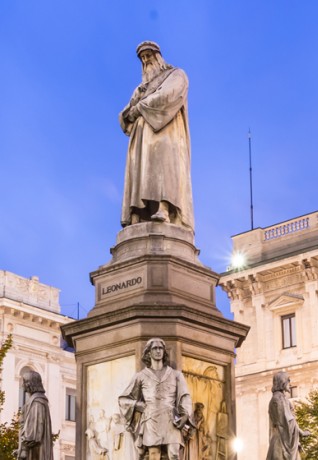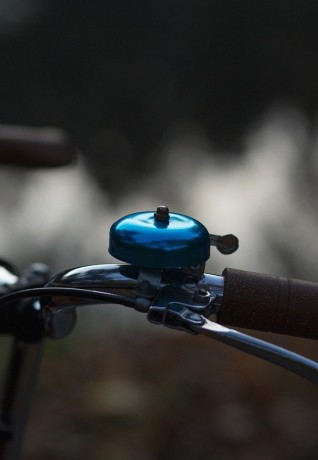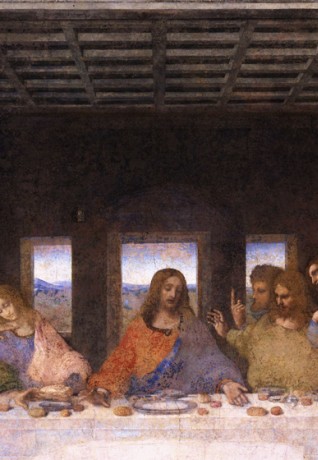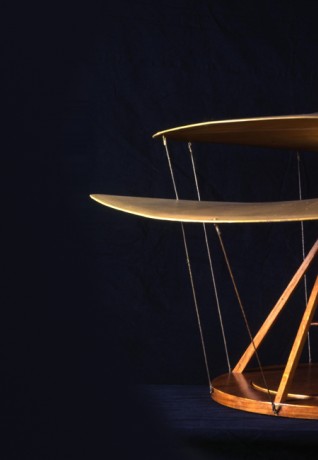A garden in a room
Castello Sforzesco
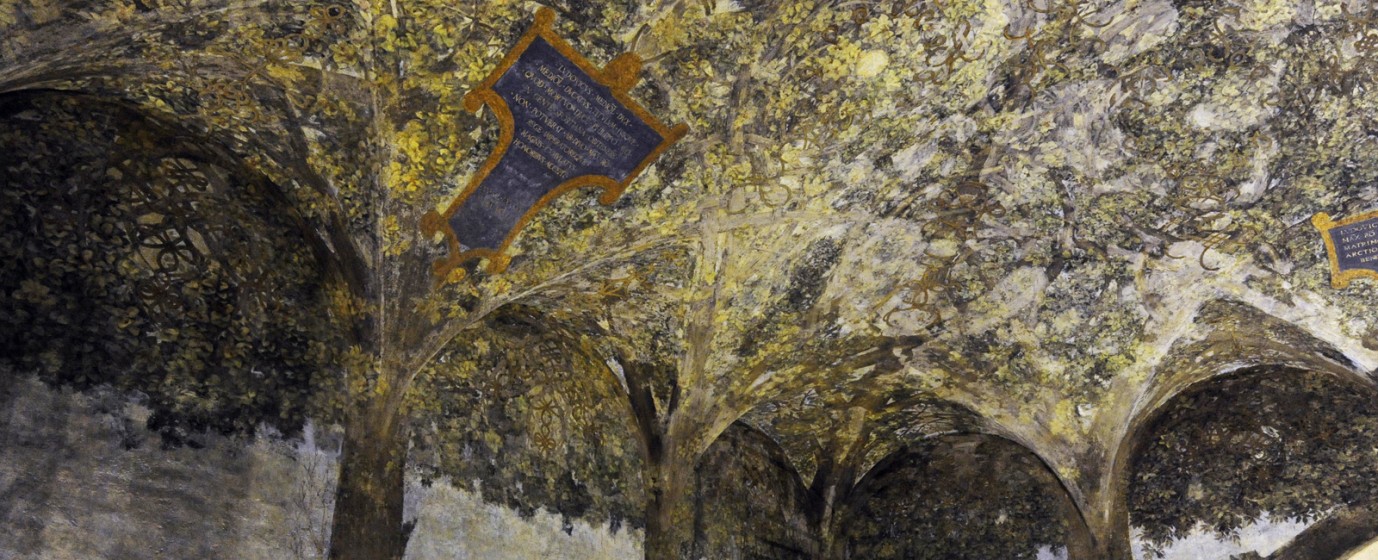
Today, it is a fortress with three courtyards - the bustling city and its traffic and shopping districts on one side, and the green Sempione Park on the other. When Leonardo lived in Milano, the Sforza Castle was the centre of the ideal city that a Renaissance-era architect and genius named Filarete had designed within an 8-pointed star. The project was called Sforzinda, and it was the epitome of harmony and perfection. Appearances took on new life at the court of Ludovico il Moro, among the scholars, astrologers, poets, musicians, architects and Leonardo da Vinci, who was all of these things rolled into one. There were cooks, stablemen and tailors for the new fashion trends, while all around the city were construction sites for new buildings and the first printing-houses were emerging.
The Duke had the castle interiors completely restyled from defensive architecture to stylish, elegant solutions. He gave instructions on decoration and dictated the dress code of his lavishly elegant court. He also filled his calendar with musical events and experimented with new crops in the castle park, where he took visiting aristocrats and ambassadors on hunting trips.
The city looked beyond its defensive walls: for such an ambitious duke who appreciated beauty immensely, Leonardo designed a high tower that could compete with today's skyscrapers. Everyone would have been able to see it from a distance, but like his Horse, it was never built. However, Leonardo did plan parties and spectacular events, a great theatre of creativity: like a luxury wedding planner, he organised the nuptials of Gian Galeazzo Sforza and Isabella d’Aragona, he enacted the Feast of Paradise with stars and planets-rotating machines.
Since the Duke loved art at least as much as he loved parties, in 1498, he asked Leonardo to decorate his “Sala delle Asse”. It mattered little that the previous Duke Galeazzo had wanted it to be red. Leonardo painted the walls and ceiling to resemble a pergola of mulberry trees as a tribute to Ludovico Sforza - the tree a reference to his nickname, “il Moro”. It also brought to mind the silk industry that was developing quickly in northern Italy, and the wisdom of a good leader, who was able to bloom and mature as he avoided the adversity of the passing seasons.
A golden ribbon wound through the branches and leaves, a fashion statement that Beatrice d’Este, the Duchess, would wear on her gowns, with the intertwining pattern of an eternal knot, without interruptions. The artwork in the Sala delle Asse is a combination of scientific observation of nature and astrological symbolism. On the walls he painted a wooded scene of trunks rising up to the ceiling, some stones near the floor where roots appear to emerge, and a landscape similar to the ones in his other paintings, all in a monochromatic scene.
Time and history have tormented the decorations in the Sala, and what has survived, thanks to years of hard work, study and restoration, is a gift from Leonardo to his era and ours. The other great legacy of Leonardo preserved in the Castello Sforzesco today is the Codex Trivulzianus: the sheets kept at the Biblioteca Trivulziana, one of the many treasures of the Castle, allow us to imagine Leonardo walking through the castle halls and courtyards as he took notes, drawing and designing a possible cupola for the Cathedral and teaching himself Latin.

 Log in
Log in
